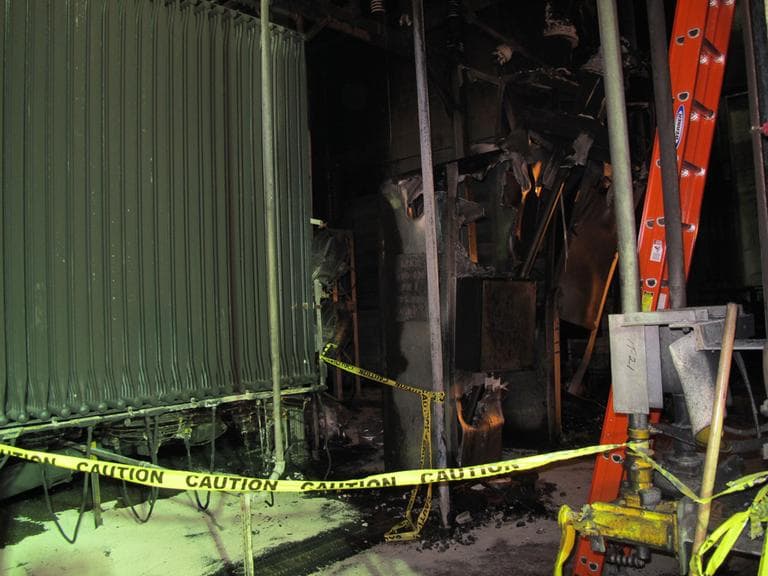Advertisement
NStar Says It Knows Cause Of Transformer Fire

Power has been fully restored to the Prudential building and Back Bay. And while the costs of the outage have yet to be tallied, NStar says it now knows the cause of the substation fire: a catastrophic failure in a connector.
You may have been hearing people talk about the aging power grid, speculating that Boston’s electrical system is groaning under the weight of a growing number of users. But standing amid the rumble of generators and the still acrid smell outside the substation, NStar CEO Tom May says that’s not it at all.
"We had a connector that connects the underground high-voltage transmission system to our substation," May said. "And that connector failed. This is a very unusual event. In my 35-year history with this company, there’s never been a failure of one of these connectors."
"This is a very unusual event. In my 35-year history with this company, there’s never been a failure of one of these connectors."
NStar CEO Tom May
The connector is made out of metal, stands about 10 feet tall, and is rectangular like a telephone booth. It houses the line carrying 115,000 volts that is insulated by a special oil that doesn't conduct electricity, but it is made out of petroleum. So on Tuesday night, when the connector broke, it spewed the oil into the substation. May says that’s what caught fire.
"Our alarm and deluge systems worked as designed, pouring water on the second transformer," May said.
That transformer was saved and is operational now, he says. The other was scorched by the fire. Even though the second generator didn’t burn, the company expects to replace it. The cost is $2.5 million.
May says he’s heard the calls for city inspectors and more regulations. But he says there was no way to tell.
"When a fault like this occurs on a 115,000 volt line, from beginning to end of the fault, is one-fifth of a second," May said. "So there was no indication. If you were looking at it a second before, there’s no way to inspect or find out what happens. Sometimes we just don’t know why mechanical things fail."
Sometimes, though, you do, and plenty of people would like to try to find out. May says NStar will go through the connector’s torn and molten metal next to the blackened transformer for any clues.
This program aired on March 16, 2012.
